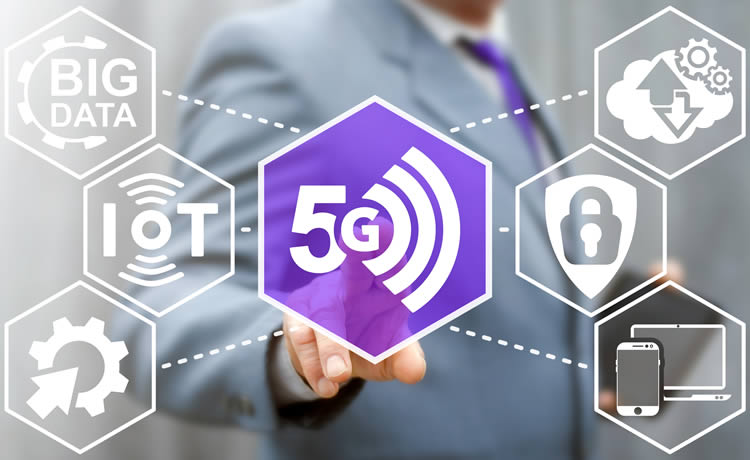
There is little doubt that technology has transformed the Logistics business in the last several years. Will we ever get to fast enough or efficient enough? It's not likely. Under pressure exerted by demand for instant gratification, new tech-first logistics providers are beginning to pervade the fulfillment environment. Without the autonomous hardware that promises to supersede traditional road transportation, they are instead leveraging digital tools to improve the performance of manually executed deliveries and reduce lead times from days to hours, with 24 being today’s bargain-basement service level. These companies, through the use of customer-integrated business platforms, mobile technology, and crowd-sourcing, are finding ways to pick orders within minutes of receiving them, dispatch deliveries on-demand, and bring buyer’s purchases to them in time-frames of two hours or even less. How are logistics professional going to keep this pace? Here are some technology trends that may be worth a look as we enter 2020 and beyond.
Robotics
Given the energy and investment in robotics in our space, suggesting that there will be a robotics trend in 2020 is pretty obvious. After all the pilots and promises, what seems to be happening is that robot solution providers, and the end user community, are realizing that there is no one size fits all robotic applications. Quite the opposite is true. The customization is proving so complicated due to the advanced operations of the robots that the programming and engineering has become problematically complicated. Robotic applications are a very customized solution depending upon the product line, distribution protocols and warehouse volume parameters. The challenge, in addition to the design, will be the management system that can bring the components in synchronicity with the rest of the automation. The difficulty seems to be that there is no standardization among the robotic providers. Each have their own standards, communication protocols and capabilities. Someone will have to figure all of that out as robots proliferate. The next generation robots will not just be tasked with simply, repetitive and mundane projects as were the first generation. The robots of today will be much more complicated providing a wide range of services. As you increase the tasks you increase both the software and hardware configurations necessary to support the project. These ambitious goal will certainly be a challenge to the engineers and programmers.
Edge Computing is a distributed computing paradigm which brings computation and data storage closer to the location where it is needed, to improve response times and save bandwidth. In layma 's terms it puts the entire computer in your handheld or mobile device. Not all that long ago, we saw the wireless revolution in the warehouse as barcode scanners, mobile printers, voice headsets and the like were decoupled from the computers that controlled them. That enabled the mobile worker, who could take a device to the point at which the work was being done. But those tools were essentially dumb terminals, the computing power and analytics were back somewhere else. Edge computing changes that. It puts computing power and analytics down on the floor, enabling truly real-time decision making and real optimization of the associate pushing a cart or driving a lift truck. Edge computing simply provides serious computing power to handheld and mobile devices throughout the warehouse enabling the user to have much more computing power at the point of use.
Logistics Safety
Ever since the eCommerce boom, the race has been on to deliver products faster with the fewest errors possible. In 2019, we saw the race for faster delivery hit a few bottlenecks, both legal and physical. The ability of tools such as drones to fly freely ran up against privacy laws. Delivery technology appeared to have reached a limit short of asking drivers to speed and forgo sleep.
The way we know these bottlenecks became serious was seen through companies suddenly making logistics safety their priority. With greater connectivity and more robust data, concerns over logistics safety and cyber-security came to the forefront. Customer data faced new challenges, and enhanced data richness gave drivers and fulfillment professionals new corners to cut, posing a challenge to safety. Technology appears to be introducing logistics solutions at a greater rate than federal, state and local governments can digest them.
Looking Forward: Order Fulfillment Optimization Logistics Trends for 2020
In 2020, you can expect to see many of the above trends continue to develop since they are still massively useful.
As safety became an issue in 2019, companies have turned to delivery experience enhancement. These are Order Fulfillment optimization methods that help alleviate the customer’s “gotta-have-it-now” anxiety; a need that I struggle to understand even today. These methods of order experience enhancement are all about letting the customer in on the shipping process. One massively effective way we can enhance customer experience is simply by raising the transparency of the shipping process. When it comes to improving customer experience, this is done with customer-facing APIs. API stands for “Application Programming Interface.” APIs give individuals and companies the power to add functionality to a website, application, platform, or software without having to actually write the programming code.
This is accomplished by integrating the API code into a company's existing code. We encounter APIs all the time online. If you’ve ever bought something from an online retailer, for example, then you’ve almost certainly interacted with an API. Most online retailers process payments using APIs from Stripe or PayPal.
Other APIs you’ve likely run into include the Google Maps API on sites like Yelp, and the “Sign in with Facebook” API which allows you to log in to a website using your Facebook credentials. Be careful of that ease of login using social media or other websites. You're giving up some security.
Read More











.jpg)
 Land-Link, a well respected professional organization, has been providing its clients with effective transportation and logistics solutions since 1978.
Land-Link, a well respected professional organization, has been providing its clients with effective transportation and logistics solutions since 1978.

